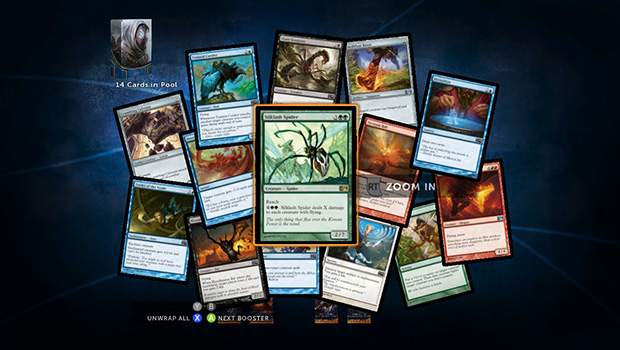

When I was younger, for about two months every year my parents sent me away to rural New Hampshire to attend sleep-away camp. This was probably a good thing for me. Being away from television and video games for a while balanced me out, and although I wasn’t a social butterfly, camp provided me with enough experience to survive the social battlefield of post-pubescent life. Though much of our time was taken up by activities, we cherished the few hours of freedom we had to ourselves. On rainy days or whenever else these moments arose, we whittled the time away playing games with little rectangular pieces of hard paper called Magic cards.
Magic: The Gathering is a trading card game that’s been around since the early 1990’s. If you’re familiar with Pokémon or Yu-Gi-Oh! cards, you can think of MTG as something similar. If you’re not, I can try to explain: there are thousands of Magic cards out there, each one with different artwork and abilities printed on it. Each player collects cards by buying and trading. From the cards in a given collection, one can assemble a deck and play a game with it against another player. Adhering to a certain set of rules (called the game’s “format”), the two players battle it out. Afterwards they can trade cards with one another to improve their respective decks.
Cards cost money, and a vast market for Magic cards has emerged out of the competitive nature of the game — the best cards are expensive, some going for hundreds of dollars online. Competitive decks are often worth $200 to $300. For a player who wants to win, MTG can become a significant time and money sink. So you can imagine my trepidation upon returning to the game after a long hiatus. I’m playing big boy Magic now, and being inexperienced results not only in embarrassment but in a loss of time and cash.
To reorient myself a bit, I used one installment in a series of computer games called Duels of the Planeswalkers, which is published by MTG parent company Wizards of the Coast. In the game you take the role of one of the title planeswalkers, a magic-user capable of traveling between dimensions and casting spells. Every battle in MTG is imagined as a duel between two or more of these so-called planeswalkers. Each card represents a spell being cast. DotP takes this basic format, dramatizes it and simplifies it to create a simple primer for newbies and a fun way to get back into the game for returning players.
Selling for ten dollars on the Steam marketplace, each installment of DotP is well worth the price. The 2014 edition which I played for this review comes packed with a tutorial, a short campaign (roughly three hours for me), several creative challenges and a “sealed” mode that allows the user some liberties in constructing a deck. This doesn’t seem like much, but for only ten dollars I found it to be well worth the price.
DotP’s gameplay is straightforward. You choose from one of several pre-made decks, each with its own themes and synergies. Through playing you unlock additional decks and additional cards for the decks you already have. The game itself consists of nothing more than a series of games of Magic, facilitated by a smooth and stable virtual interface. For MTG pros, games move somewhat slowly, requiring a few-seconds pause at each phase. But the pauses are not unbearable, and there is much here for even a seasoned veteran to enjoy.
For example, the game’s challenges are, well, challenging. Although I breezed through the first five, the “advanced” challenges gave me pause; I’m still stuck on the last one. Another aspect which may be popular among more experienced types is the sealed deck mode, which presents you with six 15-card booster packs and asks you to build your own deck to be tested against various AI opponents.
Of course, we’re still talking about a ten dollar product, and there are several limitations. The sealed deck mode only has two slots for decks, and any additional slots must be purchased. The content of the game is also quite limited, and you’d be hard-pressed to squeeze more than about ten hours of unique play out of it. After defeating each opponent and challenge, there’s technical replay value in collecting each of the game’s unlockable cards and customizing the decks you’ve unlocked; but such a mechanism feels more like a grind than an extension of the game. At that point, you’re better off waiting for the sequel.
All in all, I enjoyed Duels of the Planeswalkers 2014. But, in my opinion, Wizards of the Coast is sitting on a gold mine. DotP is as safe a game as can be; if Wizards is willing to get a little bit adventurous, there is enormous potential in a more involved MTG video game. Back in 1997 they released a role-playing game called Shandalar, in which the player started with a basic deck and was rewarded additional cards through encounters in a digitally-rendered world. There was a storyline and much more plot progression. The basic formula from DotP was there all the way back in the late-’90s, with added nuance and presentation. In the realm of video games, Wizards has only reverted since then.
I hope that Wizards will consider a return to the spirit of 1997 and aim for publishing a more advanced MTG video game in the future. I would buy it in a heartbeat. But, then again, I would probably also buy a new Duels of the Planeswalkers as a pale substitute. Wizards knows me, and it knows its market, so it seems unlikely anything with substantially more depth will be released any time soon.